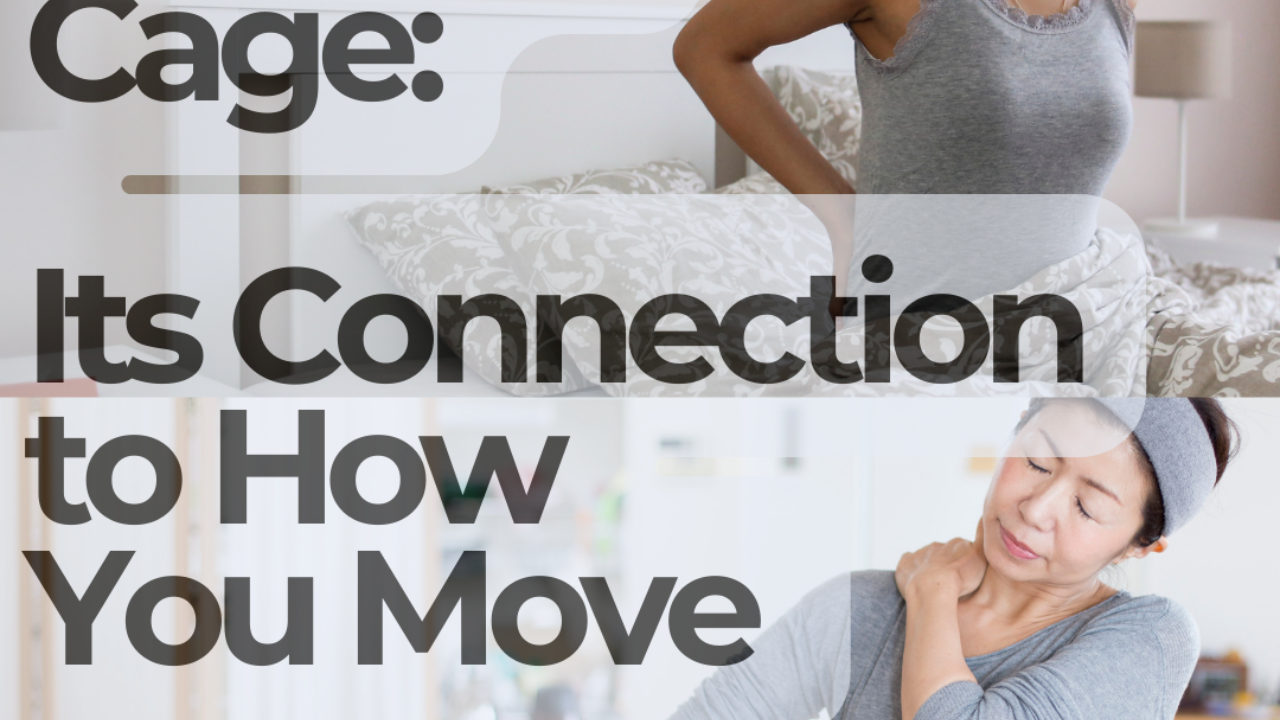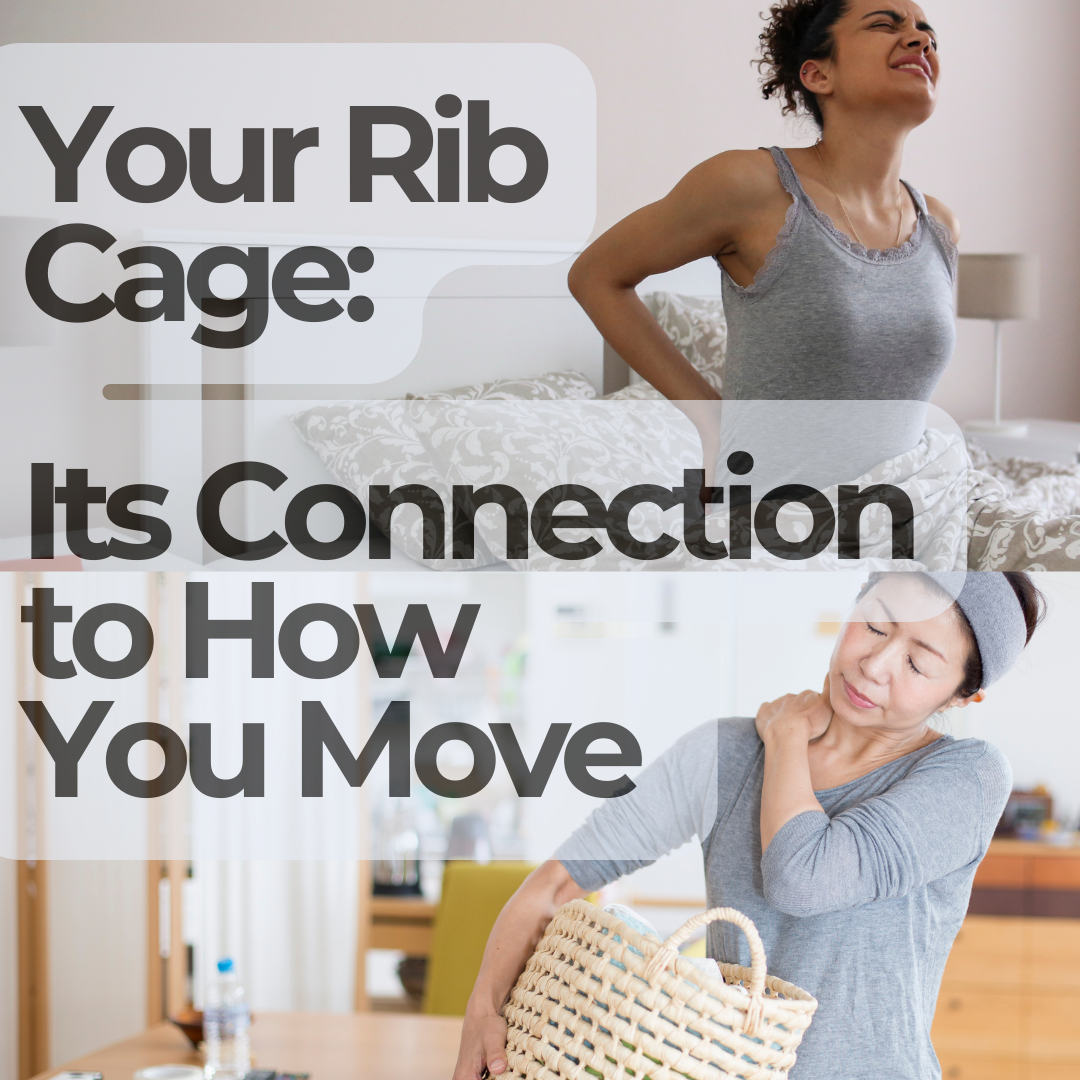Your Rib Cage: Its Connection to How You Move


We left off our last newsletter about the rib cage with some questions for you to think about.
- Does your rib cage feel mobile or stiff? Do you breathe easily?
- When you turn or move your head, can you do so easily?
- Is your rib cage flared at the bottom?
How did you answer these?
If you answered, your rib cage feels pretty stiff: You are likely not receiving all the benefits of breathing well. When we breathe well or three-dimensionally, it helps create mobility in our rib cage. The opposite is true when we don't breathe well. It can make our rib cage stiffer by overusing the muscles that are attached to it for the simple task of breathing.
If you answered you don't breathe well: Your rib cage may also be it stiff or rigid. Perhaps you feel like you cannot get a breath fully in or out.
If you answered you do not turn your head well or easily to one side or the other: The muscles that are attached from your neck to your rib cage may be part of the cause if they are overstretched due to posture, habits, injury or if the muscles are short and tight. Either of these can be caused by the muscle or muscles not properly aligned.
If you answered yes that your rib cage flares at the bottom or that your rib cage protrudes out or up at the bottom: This may be a sign of not breathing optimally and/or you are not using your core muscles efficiently.
As we discussed before, many muscles are attached from your neck and shoulders to your rib cage on the top and from your hips/pelvis to your rib cage on the bottom. While these muscles contribute to different movements, one thing they all have in common when they attach to the rib cage is they assist with breathing.
When we say they assist with breathing, to clarify, they assist with breathing during strenuous activities. Assist is the key, and only during some activities. We can get into trouble, like chronic tightness, pain, etc., in the neck, shoulders, back, or hips when we use these 'assist' muscles as primary or quiet muscles for breathing.
Recall, from previous emails, we have two primary muscles of respiration: the diaphragm, which attaches all around the rib cage on the bottom, inside of the rib cage, and the intercostal muscles, which are located between our ribs.
What happens in and around the rib cage is essential for our vital organs, postures, breathing, and upper and lower bodies moving and functioning.
In our next installments, we start to look at how you can begin to improve how you move and feel in your body by having this new knowledge of the rib cage.
Until then, we will leave you with these questions to ponder about the muscles attached to the rib cage.
- When you breathe, can you see your neck muscles actively contracting?
- Do you tend to pull your abdominal muscles in for posture, aesthetics, or when exercising?
If you have questions, reach out. If you know someone who may be interested in the newsletters we share, please be sure to 'share'.
______________________________

